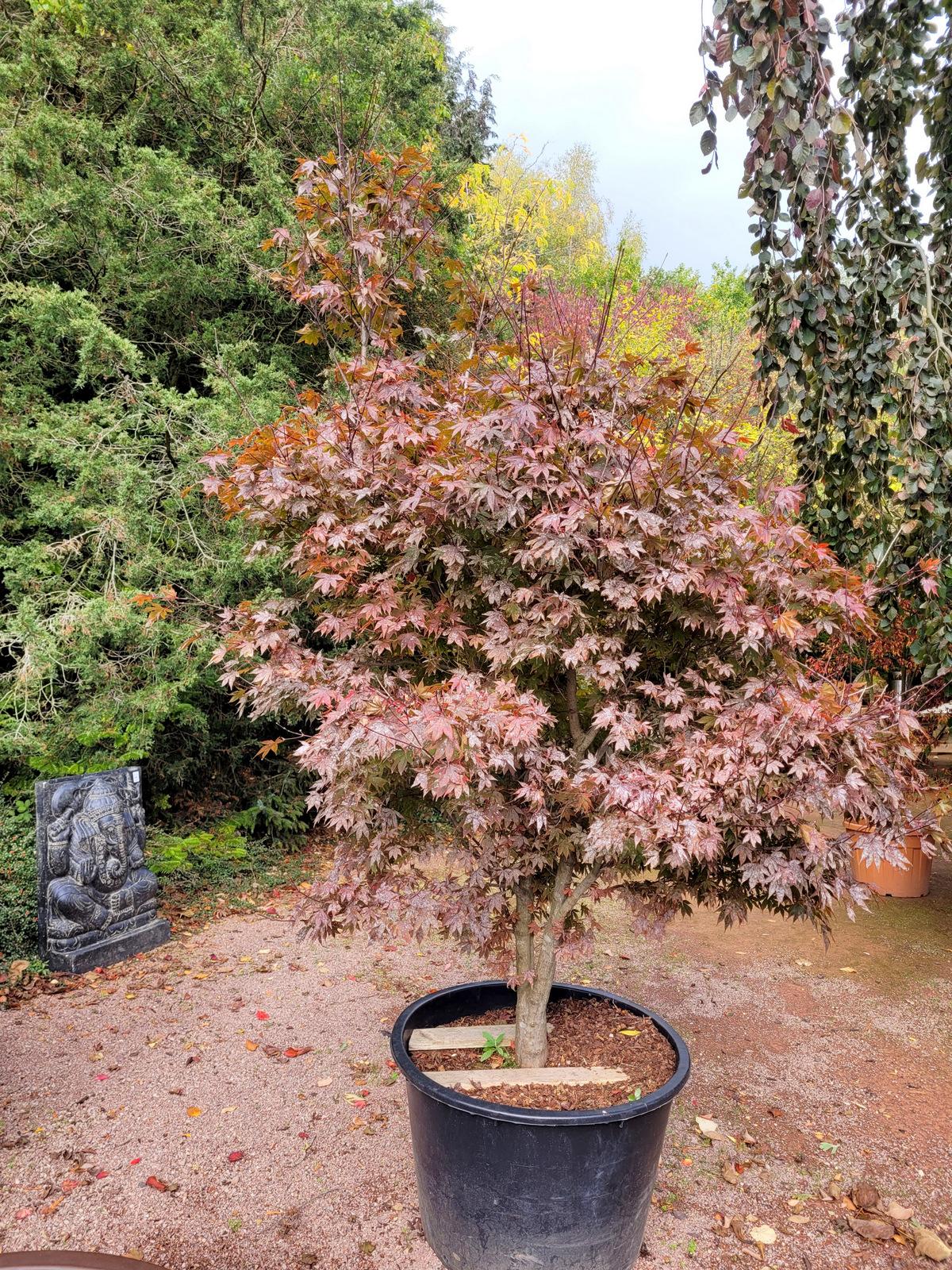
Acer Palmatum Plant
Acer Palmatum Plant: A Complete Guide
Introduction
Acer Palmatum, commonly known as Japanese Maple, is a species of tree or shrub that is native to Japan, Korea, and China. It is widely cultivated for its ornamental value, with various cultivars available in different shapes, sizes, and colors. In this article, we will delve into the characteristics, care tips, and benefits of growing Acer Palmatum plants in your garden.
Characteristics
Acer Palmatum plants are known for their stunning foliage, which varies in color from red and orange to green and purple. The leaves are typically palm-shaped, with five to nine lobes, giving them a delicate and intricate appearance. The plants also produce small, inconspicuous flowers in the spring, followed by winged seeds in the fall.
Growing Conditions
Acer Palmatum plants thrive in well-drained soil that is rich in organic matter. They prefer partial shade to full sun, although some cultivars may require more shade to prevent leaf scorch. These plants are hardy in USDA zones 5-8 and can tolerate cold temperatures as long as they are protected from strong winds.
Watering and Feeding

Acer Palmatum plants require regular watering, especially during hot and dry periods. It is important to keep the soil consistently moist but not waterlogged to prevent root rot. Fertilize the plants with a balanced fertilizer in the spring to promote healthy growth and vibrant foliage.
Pruning and Shaping
To maintain the desired shape and size of Acer Palmatum plants, it is important to prune them regularly. Remove any dead or damaged branches, as well as any crossing or overcrowded growth. Shaping the plants can also enhance their ornamental value and promote better air circulation.
Pests and Diseases
Acer Palmatum plants are relatively pest and disease resistant, but they may still be susceptible to aphids, scale insects, and fungal diseases. Keep an eye out for any signs of infestation or disease and treat them promptly with insecticidal soap or fungicides.
Landscaping Uses

Acer Palmatum plants are versatile and can be used in various landscaping settings. They make beautiful focal points in garden beds, borders, and containers. Their vibrant foliage adds a pop of color to any garden and can complement other plants and flowers.
Benefits of Growing Acer Palmatum Plants
Aside from their aesthetic appeal, Acer Palmatum plants offer several benefits to gardeners. They provide shade and shelter for wildlife, such as birds and insects, and improve air quality by filtering out pollutants. These plants also contribute to the overall biodiversity of the garden ecosystem.
Popular Cultivars
Some of the most popular cultivars of Acer Palmatum include ‘Bloodgood,’ ‘Sango Kaku,’ and ‘Dissectum.’ Each cultivar has its own unique characteristics, such as leaf color, shape, and growth habit. Choose a cultivar that suits your garden design and climate conditions.
Propagation Methods
Acer Palmatum plants can be propagated through seeds, cuttings, or grafting. Seeds should be collected in the fall and stratified before sowing. Cuttings can be taken in the summer and rooted in a moist, well-drained medium. Grafting is a more advanced method that involves joining a scion from a desirable cultivar onto a rootstock.
Common Questions about Acer Palmatum Plants
1. How fast do Acer Palmatum plants grow?
Acer Palmatum plants are relatively slow-growing, typically adding 1-2 feet of growth per year. However, some cultivars may grow faster than others, so it is important to research the specific growth habits of the plant you choose.
2. Do Acer Palmatum plants require special care in the winter?
Acer Palmatum plants are hardy and can tolerate cold temperatures, but they may benefit from additional protection in harsh winter conditions. Mulch around the base of the plant and wrap the branches in burlap to shield them from frost and wind.
3. Can Acer Palmatum plants be grown in containers?
Yes, Acer Palmatum plants can be grown in containers, which allows for more flexibility in terms of placement and care. Ensure that the container has good drainage and use a high-quality potting mix to provide the necessary nutrients.
Conclusion
In conclusion, Acer Palmatum plants are a beautiful and versatile addition to any garden. With their stunning foliage, easy care requirements, and numerous cultivars to choose from, these plants are sure to enhance the aesthetic appeal of your outdoor space. By following the tips and guidelines outlined in this article, you can successfully cultivate and enjoy the beauty of Acer Palmatum plants in your own garden.